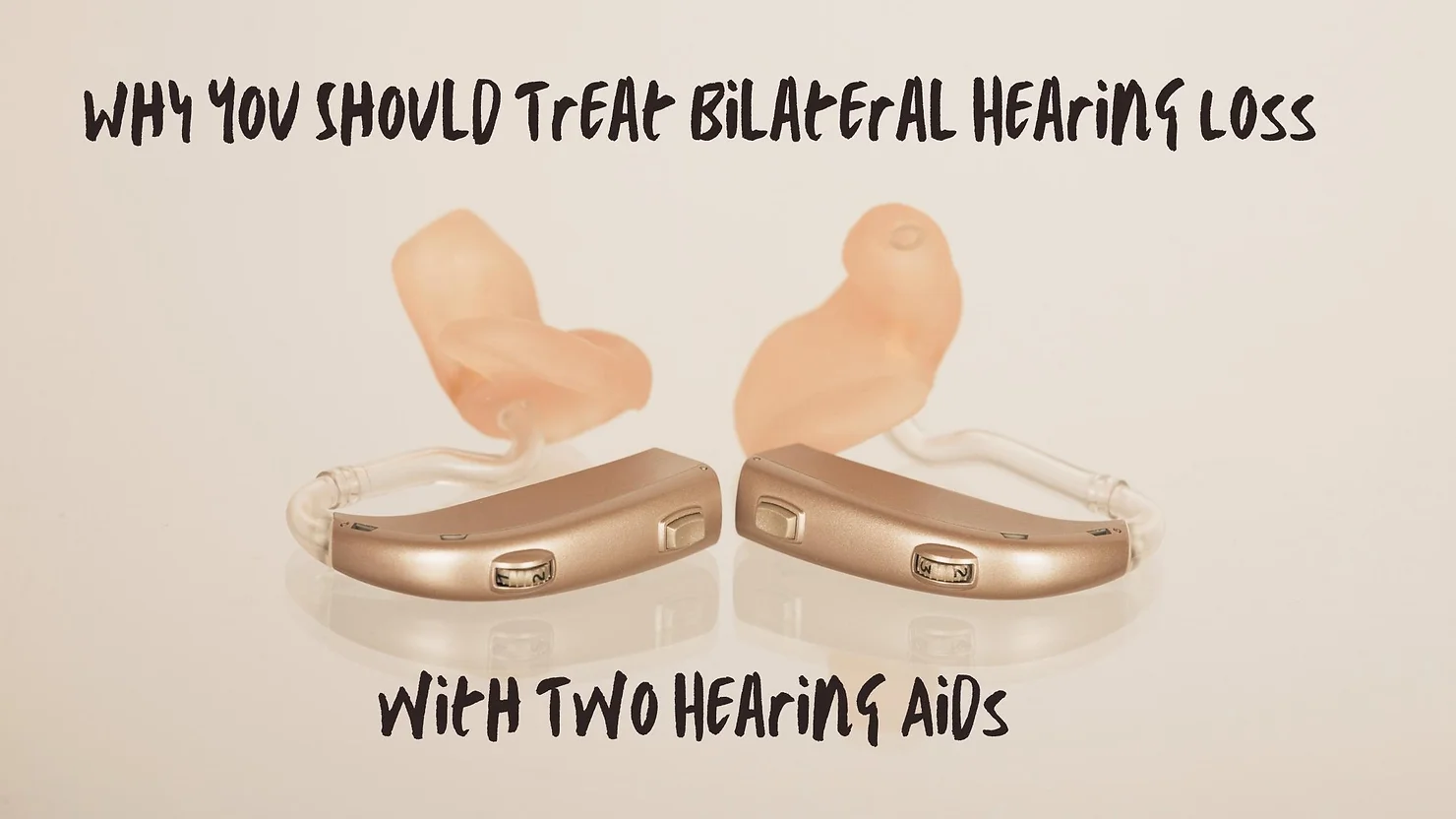
There are numerous ways hearing loss can be experienced. Bilateral hearing loss describes hearing loss that is present in both ears. Treating this type of impaired hearing with two hearing aids offers numerous benefits that maximize hearing capacity.
Bilateral vs. Unilateral Hearing Loss
Bilateral hearing loss differs from unilateral hearing loss which is when hearing is impaired in one ear. Bilateral or unilateral hearing loss is identified by a hearing test which is a diagnostic assessment of hearing capacity in both ears. This involves a painless process that measures hearing capacity and established degree of impairment in each ear which can also differ. Bilateral hearing loss can be symmetrical or asymmetrical. Symmetrical hearing loss is when the degree of impairment is the same in both ears. In contrast, asymmetrical hearing loss describes having different degrees of impairment in each ear.
Bilateral hearing loss reduces the capacity to perceive and process sound, producing a range of symptoms. Common symptoms include:
-
Tinnitus: often referred to as ringing of the ears, tinnitus is a buzzing or ringing-like noise in the ears when no external sound is present.
-
Sounds are distorted, seemingly muffled, or slurred.
-
Difficulty identifying individual words, hearing in nosier settings, following conversations with multiple people, etc.
-
Asking others to repeat something they’ve said, speak a little louder, and/or slower.
-
Increasing the volume on the television and/or other electronic devices.
-
Using strategies like lip reading to help distinguish words and follow a conversation.
Depending on the degree of impairment in both ears, these symptoms can be mild to severe.
Bilateral hearing loss can strain communication which has multifaceted effects including social withdrawal, straining relationships, depression, and increasing health risks.
Understanding Bilateral Hearing Loss
Bilateral hearing loss can be caused by a range of factors. Causes differ between the specific types of bilateral hearing loss:
-
Sensorineural: this is the most common type of hearing loss. Sensorineural hearing loss occurs when the hair cells in the inner ear are damaged. There are thousands of hair cells in the cochlea which help translate soundwaves into electrical signals. These signals are then carried to the brain to be processed and assigned meaning to, allowing us to understand the speech and sound we hear. Hair cells in the inner ear, unlike other types of cells in the human body, do not regenerate. There is also no medical intervention that can replenish these cells which means that any damage they experience is irreparable, producing hearing loss. Sensorineural hearing loss can be caused by loud noise, other medical conditions, aging, head/neck injuries, chronic ear infections, etc.
-
Conductive: less common, conductive hearing loss occurs when there are obstructions that prevent sound from reaching the inner ear. These obstructions are usually in the outer or middle ear and can include: an accumulation of earwax in the ear canal, bone growths, ear infection, etc. This type of hearing loss is usually temporary and can be treated with medications or surgical options.
-
Mixed: this type is a combination of sensorineural and conductive hearing loss.
Fortunately, there are useful ways that bilateral hearing loss is treated and effectively managed.
Benefits of Two Hearing Aids
The most common treatment for bilateral hearing loss is hearing aids. Hearing aids are medical devices that absorb, amplify, and process sound. Providing ample support, hearing aids maximize hearing capacity. This allows people to hear and process sound more readily and clearly. Because bilateral hearing loss involves impairment that is in both ears, wearing two hearing aids (rather than one) is much more beneficial.
Once your specific hearing needs are established, your hearing healthcare provider can make recommendations for hearing aids that will meet those needs. Hearing aids are equipped with various settings and features that can be adjusted to address the specifics of your hearing loss. Your hearing healthcare provider will set these programs on your devices. This is incredibly useful for bilateral hearing loss because hearing needs could be different in each ear. A hearing aid in each ear can be specifically programmed to meet the needs of that ear. This offers countless benefits including increased speech recognition, enhanced sound quality, and better sound localization. These benefits create seamless hearing experiences and allow people to navigate daily life with greater ease. Contact us today to learn more!
